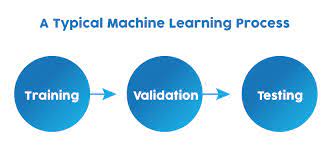Machine learning and deep learning are both subfields of artificial intelligence (AI) and involve training models to make predictions or perform tasks. However, they differ in their approach, architecture, and the type of data they handle. Here’s a breakdown of their differences:
Machine Learning:
- Approach: Machine learning focuses on algorithms that learn patterns and relationships from data to make predictions or take actions. It relies on statistical techniques and algorithms to extract features and build models.
- Feature Engineering: In machine learning, feature engineering is crucial, where domain experts manually select and engineer relevant features from the data. These features serve as inputs to the learning algorithm.
- Model Complexity: Machine learning models typically have fewer layers and parameters compared to deep learning models. They are often simpler and easier to interpret.
- Training Data: Machine learning models can work well with smaller datasets and require a moderate amount of labeled data for training.
- Performance: Machine learning models perform well in many applications, especially when dealing with structured data, tabular data, or problems with a moderate number of features.
Deep Learning:
- Approach: Deep learning aims to mimic the structure and functioning of the human brain by using artificial neural networks. It involves training models with multiple layers of interconnected neurons to automatically learn hierarchical representations from raw data.
- Feature Learning: Deep learning models automatically learn relevant features from the raw data, eliminating the need for explicit feature engineering. The models learn to extract and represent features at different levels of abstraction.
- Model Complexity: Deep learning models can be highly complex, consisting of multiple layers and millions of parameters. They are capable of learning intricate patterns and representations.
- Training Data: Deep learning models typically require large amounts of labeled data for training to generalize well and avoid overfitting. They excel in applications with vast amounts of data, such as images, speech, text, or sensor inputs.
- Performance: Deep learning models have achieved remarkable success in various domains, including computer vision, natural language processing, and speech recognition. They are particularly effective in tasks involving unstructured data and complex patterns.
Machine learning and deep learning are both subfields of artificial intelligence, but they differ in their approaches and architectures. Here are the main differences between machine learning and deep learning:
- Architecture and Complexity: Machine learning typically involves the use of algorithms that learn from data and make predictions or decisions based on that learning. These algorithms can be relatively simple, such as linear regression or decision trees. On the other hand, deep learning is a subset of machine learning that utilizes artificial neural networks with multiple layers of interconnected nodes. These deep neural networks can automatically learn hierarchical representations of data, making them capable of handling more complex tasks and capturing intricate patterns.
- Feature Engineering: In traditional machine learning, domain experts often manually engineer relevant features from the input data to help the model learn and make accurate predictions. Feature engineering requires prior knowledge and expertise in the specific domain. In deep learning, the neural networks can automatically learn relevant features directly from the raw input data, reducing the need for manual feature engineering. Deep learning models can discover complex features and representations on their own, leading to potentially better performance in certain cases.
- Data Requirements: Machine learning models typically require a sufficient amount of labeled data to generalize well and make accurate predictions. The performance of machine learning algorithms can plateau or degrade when the amount of available training data is limited. On the other hand, deep learning models, particularly deep neural networks, can extract more meaningful representations from large amounts of unlabeled data using unsupervised learning techniques. This ability to leverage unlabeled data can be beneficial when labeled data is scarce.
- Computational Resources: Deep learning models, due to their complex architectures with multiple layers and millions of parameters, often require significant computational resources for training and inference. Training deep neural networks can be computationally intensive and time-consuming, often requiring specialized hardware such as Graphics Processing Units (GPUs) or specialized processing units like Tensor Processing Units (TPUs). In contrast, some smaller and simpler machine learning models can be trained and deployed on less powerful hardware.
- Generalization and Interpretability: Machine learning models are generally known to be more interpretable, meaning it is easier to understand and explain the decisions or predictions made by the model. This interpretability can be useful in scenarios where transparency and explainability are crucial. Deep learning models, on the other hand, often prioritize accuracy and performance over interpretability. Deep neural networks can be seen as black boxes, making it challenging to understand all the details of how they arrive at their predictions. However, there are techniques being developed to improve the interpretability of deep learning models.
It’s important to note that deep learning is a subset of machine learning, and the choice of which approach to use depends on the specific problem, available data, computational resources, and the desired level of interpretability.
